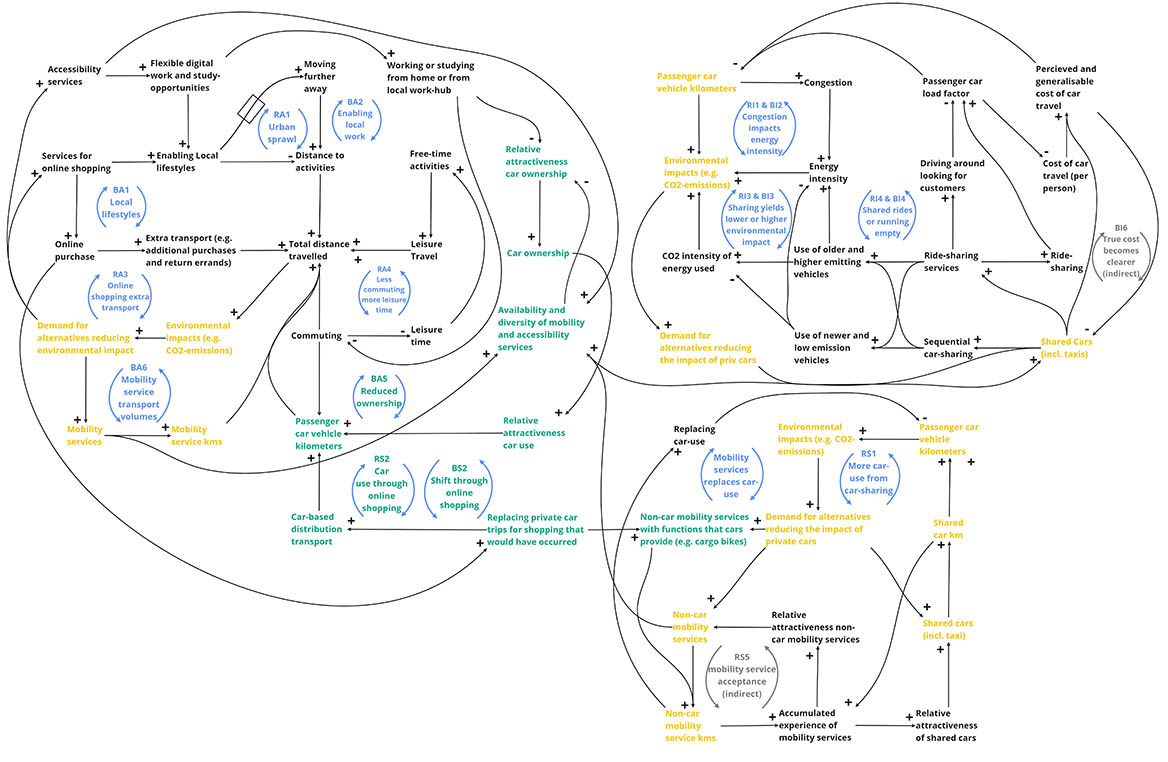Avoid, shift and improve
A framework for the transport challenge.

Mistra SAMS takes a long-term perspective on how the transport system can develop in socially just and sustainable directions. In 2022, we worked with the Avoid-Shift-Improve (ASI) framework (a general guide proposing three ways of creating a more sustainable transport system) to explore how
these goals can be attained.
In our work, “Avoid” means avoiding transport (of people and goods) altogether by reducing the number of trips or by shortening the required distances. “Shift” means shifting the mode of transport away from single-passenger cars to more environmentally sustainable modes of transport. “ Improve” means improving the environmental performance of car-travel through technological factors, which will decrease energy used and CO2- emissions (this factor also includes increasing occupancy rates in order to reduce the number of vehicle kilometres per passenger).
Visualising connections with Causal Loop Diagrams
The ASI-framework was a starting point for an exercise with Causal Loop Diagrams, which is way of visualising how various factors are, or can be, causally connected. The ASI-framework and Causal Loop Diagrams have been used in workshops with partners as a way to find and illustrate possible positive changes in the transport system. The results are summarized in a paper that is currently (early 2023) under revision.
The Causal Loop Diagrams demonstrate that mobility services can have both positive and negative effects, and these diagrams also reveal the causes of those effects. Causal Loop Diagrams are a potentially useful tool for further developing transport policies. This result is also supported by the specification of direct, enabling and systemic levels in the analysis.
